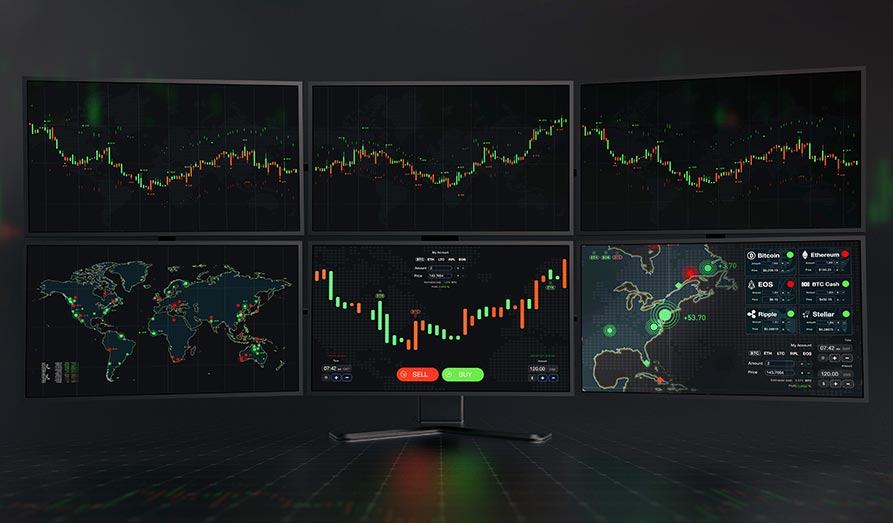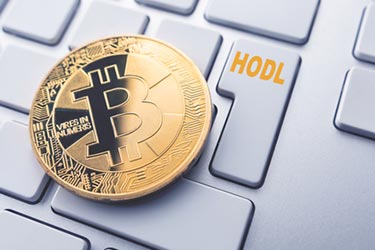
Many former stocks or forex traders are starting to look into crypto, and all of the potential opportunities…
Advantages for smart crypto traders include longer opening hours, usage of similar graphs and macro data, while the often higher volatility can be both a blessing and a curse. Today, Crypto Lists are looking into a range of similarities between forex and crypto trading, but also quite a few differences. If you’re looking for a smarter way into crypto, with some hands on examples of how the crypto market works, then continue below and dig into the comparison, starting with the major differences.
Go directly to
- 1 Difference One: Opening Hours When Trading Forex vs Crypto
- 2 Difference Two: The Length of Trading Cycles
- 3 Difference Three: Potential for Huge Gains With Minor Investments
- 4 Difference Four: HODL vs Day Trading
- 5 Difference Five: The Importance of Whales vs Central Banks
- 6 Difference Six: There Are Usually Lower Costs for FX Trading
- 7 Difference Seven: More Individual Traders in Crypto
- 8 Difference Eight: The Forex Market Is 127 Times Bigger
- 9 Similarity One: Candlestick Graphs Works
- 10 Similarity Two: Macro Factors Matters
- 11 Similarity Three: Analysts’ Can Predict, But Are Not Always Right
- 12 Similarity Four: You Can Go Long or Short
- 13 Which Is the Riskier Option?
- 14 Where Can I Expect Most Volatility?
Difference One: Opening Hours When Trading Forex vs Crypto
For stock (shares) traders, FX is way more generous with 24 hour trading between Monday to Friday, every day, every week. However, cryptocurrencies can be traded on every single day of the year, every minute – regardless of which day, hour, or bank holiday it is.
So crypto trading is definitely more flexible when it comes to opening hours – but some might also see it as a longer time frame to keep awake and the additional hours may require a bigger need to adjust your positions.
Difference Two: The Length of Trading Cycles
Coinbase CEO said in August 2022 that he does not believe that the current crypto bear market will last for more than 18 months. Well, for sure – let’s hope it’s way shorter than that. Many other analysts and writers predict between 290 days and 2.5 years at most.
But how long does a bear market last? The average bear market for U.S stocks seems to last 16 months, but it could take about 20 months if a recession takes place this winter. So while the average bear market for crypto usually is shorter than for shares, the two markets often follow each other rather closely due to macroeconomic factors. But crypto-specific issues and regulation can also affect the length of trading cycles for digital assets.
Difference Three: Potential for Huge Gains With Minor Investments
In forex trading, you usually have to invest rather big amounts even to get started. In crypto, you can begin with a few dollars or other fiat currency, and if you’re lucky and have good timing, the return can sometimes be exceptional. In forex you usually have to take huge leverage in order to get a decent profit from an otherwise rather slow market. But large leverage comes with risks in forex trading. Just holding your crypto gives more potential for huge gains with a small investment, but like always – it’s important to buy somewhat at the right time, even if it’s impossible to predict the exact day or week that stocks or crypto have reached the bottom.
Difference Four: HODL vs Day Trading
Long term investors in crypto, tend to HODL (industry terminology that means to hold on to coins despite downward shifts in the market, amusing shorthand for ‘Hold On For Dear Life’) their investments regardless of whether the market goes up and down.  In forex on the other hand, most people are short-term traders, often known as day traders, with a maximum a few days or weeks time horizon. One of the reasons for short-term movements is that traders in forex often take a position based on news events, such as central bank announcements or government changes.
In forex on the other hand, most people are short-term traders, often known as day traders, with a maximum a few days or weeks time horizon. One of the reasons for short-term movements is that traders in forex often take a position based on news events, such as central bank announcements or government changes.
Crypto traders are usually not paying as much attention to central banks and government decisions as currency traders, even if regulation and licensing is something that can be positive for digital assets. The general maxim in most crypto communities is that you should always HODL and never sell as over the long term crypto will go up. Forex traders on the other hand, thrives by short term movements, since the daily price changes are usually smaller than in crypto.
Supply: 18,925,000 / 21,000,000
Release date: January 3, 2009
Description: Have you thought about HOLDing your Bitcoin? Learn more about it in our in-depth review.
Risk warning: Trading, buying or selling crypto currencies is extremely risky and not for everyone. Do not risk money that you could not afford to loose.
Difference Five: The Importance of Whales vs Central Banks
In FX trading, you look out for central banks that are looking to strengthen their currency. They can do this, and either sell big amounts of their reserve currencies or buy on the open market.
In crypto, you look out for whales that either go long or short. Whales are huge investors that can go make the crypto market swing in either direction. A few crypto whales that sell Bitcoin for instance, can make the average investor worried and make them sell as well. The same thing is true when celebrities, such as Elon Musk for instance, go out and announce that they bought more Dogecoin (DOGE).
Difference Six: There Are Usually Lower Costs for FX Trading
The price a trader pays for buying a selling a highly liquid currency cross, such as EUR/USD, is often just a few pips (0.001%). While more exotic forex pairs get way more expensive, with wider spread, the transfer costs and total trading fees are usually less favorable when you focus on crypto.
One way of lowering your transaction costs and getting better spread, while using an optimal deposit method, is to go with a p2p exchange. Some of Crypto Lists’ favorites sites to buy digital assets include Kraken (see review) or try here, the peer to peer Bitcoin exchange called Hodl Hodl (read review) or sign-up here. Another similar peer-to-peer crypto exchange with considerably more coins and tokens is Local Cryptos that you can read about here – or try out now!
Difference Seven: More Individual Traders in Crypto
While trading in fiat is done by a wide range of companies and businesses and even central banks, crypto has mainly been traded by individuals thus far. This is slowly starting to change though, and over time Crypto Lists expects that way more professional traders will choose crypto instead of forex. Why? Well, the volatility is higher and that will likely give more trading opportunities.
Difference Eight: The Forex Market Is 127 Times Bigger
The market for foreign exchange consist of many huge players, such as investment funds, investment banks and businesses that trade all over the world. According to Bank of International Settlements (BIS), the daily forex turnover is on average 6.6 trillion dollars per day ($6,600,000,000,000) according to the latest statistics from April 2019.
In comparison, the biggest 10,000 cryptocurrencies stood for a daily turnover of around 52 billion dollars ($52,000,000,000) per day, making the daily turnover of traditional currencies almost 127 times bigger than crypto. Over time, Crypto Lists are confident that we are going to see different numbers – and most likely hundreds of thousands of new entrants per day to the crypto market when the next bull run begins. The gap will shrink, but most important cryptocurrencies are still far, far behind forex when it comes to daily turnover.
Even in the light of differences between the two, there are also quite a few similarities. Here are the most obvious ones.
Similarity One: Candlestick Graphs Works
Both with forex and crypto investing and trading, candlestick graphs work wonders. You can see the trends: both short term and long term movements in the same way. So you can use exactly the same graphs and tools when you trade crypto CFDs with sites such as Skilling or when you trade forex CFDs with the same broker. For American customers, eToro US gives an excellent trading experience with candlestick graphs or whatever you prefer.
Similarity Two: Macro Factors Matters
Typical economic factors such as interest rates, economic growth, and inflation matters for most cryptocurrencies AND traditional fiat currencies. When the interest rates rises, people tend to sell of crypto positions, not the least to cover bills and increasing expenses. People need buffer money and for both crypto and currency trading firms, bear markets affect the willingness to invest.
Similarity Three: Analysts’ Can Predict, But Are Not Always Right
There are lots of savy individuals and analysts that think they’ve got the skills to predict cryptocurrency prices. Our own price specialist, Stanko, provides analysis about the price ranges and trends for important crypto pairs. Some of the latest include the Dogecoin price estimate for Q4, if Ethereum Classic (ETC) will rise or fall and the outlook for Avalanche. Crypto Lists notice that most price predictions for BTC are still a bit over optimistic, but then again – the year is not over yet!
Similarity Four: You Can Go Long or Short
In both crypto and forex trading, you can go either go long in any pair or short. Shorting crypto may be popular among hedge funds and speculators at certain time, and during a bear market like now it’s also become more popular among individual cryptocurrency traders. In the forex market, there are also many parties taking both long or short positions – which simply means that they believe in a specific currency. Since cryptocurrencies often are traded against USDT or any other stablecoin, the meaning of going short for crypto traders usually means that they believe that the market will turn down.
Which Is the Riskier Option?
Nothing is safe when it comes to trading. It’s always advised to use stop-loss levels and to set a take-profit as well. With the right money management in place, trading gets at least a bit less risky. In the last few years, we rarely see fiat currencies move more than 2-3 % per day, even if the Turkish Lira and the Pound Sterling have been an exception to this in the last few months. Then again, it’s not every day that a country with 83% inflation plans to continue to cut interest rates. In the crypto world, hacks and theft can make it a risky option, but with a safely stored password and a hard wallet such as Trezor, the possibility to steal is close to zero.
Where Can I Expect Most Volatility?
Traditionally crypto is well known for volatility during the short lifetime. But like always, it depends on which trading pairs you consider. If we are taking the top two forex pairs; EUR/USD and USD/JPY – the volatility is usually below 1% on any single day. Meanwhile, the two major crypto pairs; BTC/USDT and ETH/USDT, have a tendency to move up to 10% on any given day, even if most of the time they only move a few percentage points. So if you’re after volatility; then go for crypto. If you prefer slower movements, then currency trading might be a better option for you.
Footnote: Markus Jalmerot has been writing about Forex, on and off, for almost 19 years. He started the Scandinavian website ForexTrading.se in 2004 and joined the founder Marcus E in 2019 with Valutahandel.se (which means “currency trading” in Swedish). The latter is still the biggest site in Sweden and the Nordics about forex trading.





 Bitcoin breaches 100k USD barrier - to the moon?
Bitcoin breaches 100k USD barrier - to the moon? Transfer BTC faster than ever on Bet Panda casino
Transfer BTC faster than ever on Bet Panda casino Start off your Monday with a 1 BTC bonus at Cryptorino
Start off your Monday with a 1 BTC bonus at Cryptorino Two no-KYC casinos with bountiful BTC bonuses!
Two no-KYC casinos with bountiful BTC bonuses! Four stage 100 mBTC bonus on Power Up casino
Four stage 100 mBTC bonus on Power Up casino
























